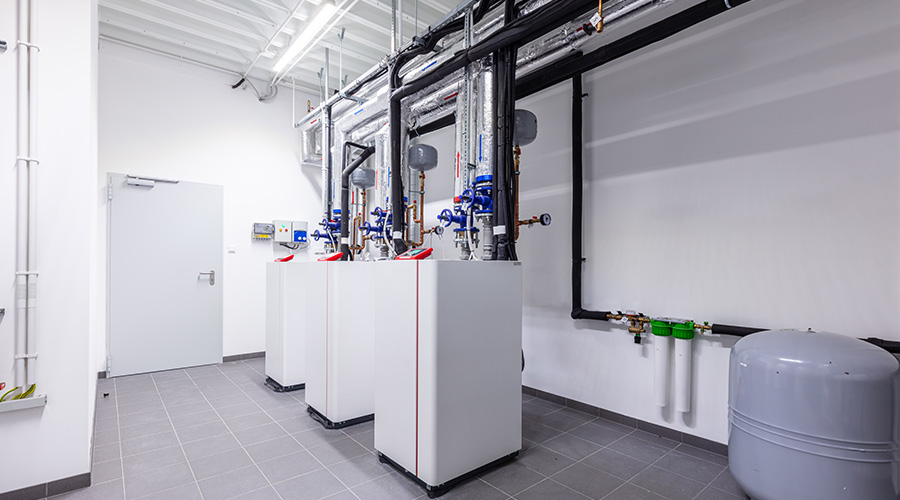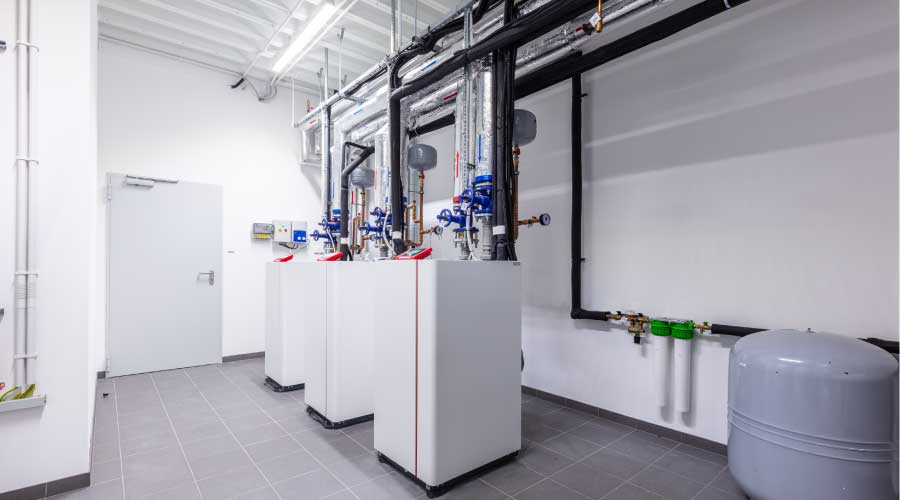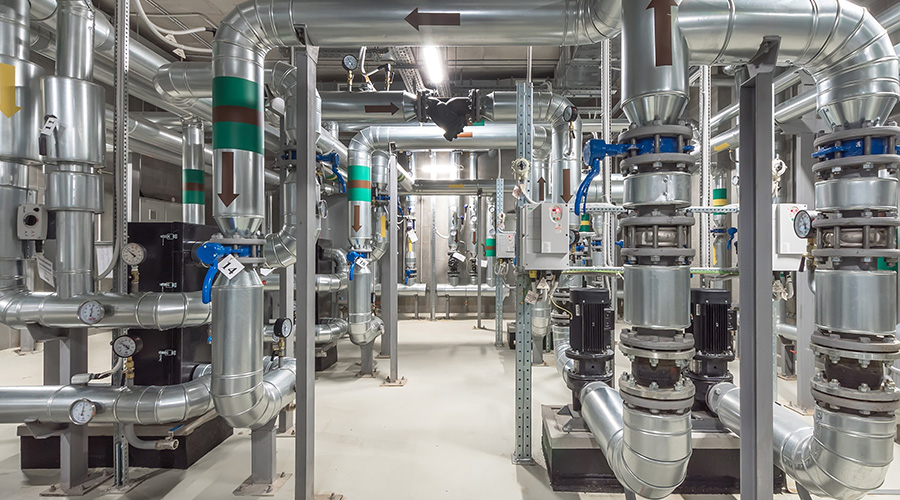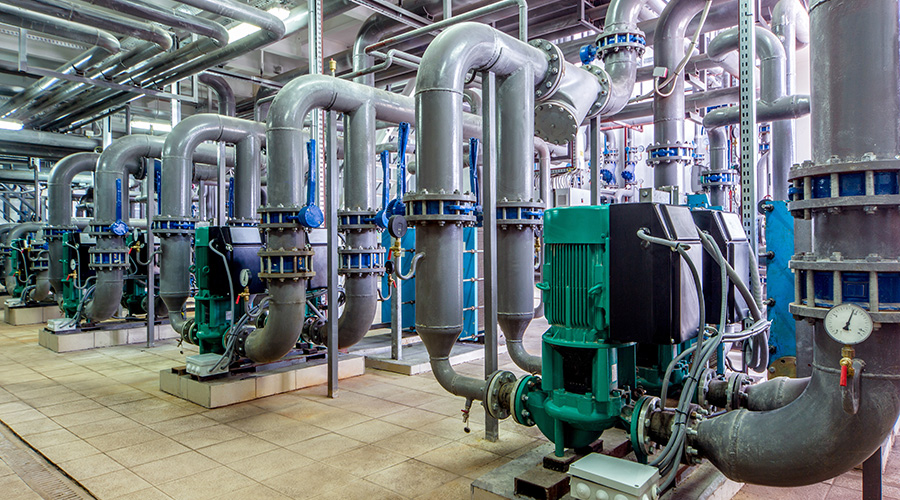Smart Choices On Air Filtration
Understanding a facility’s filtration needs, as well as the contaminants at work, can help managers make savvy decisions
The air filtration system installed in building HVAC systems is the primary defense against airborne contaminants for HVAC equipment and building occupants. But in spite of their importance, filtration systems are the most overlooked component in HVAC systems. The problem starts with building designers and specifiers, who apply designs that they have used in the past instead of considering facility needs. Many maintenance managers make the situation worse by basing the selection of replacement filters primarily on first cost.
One reason filtration systems are so overlooked is a lack of understanding of the types of building contaminants and methods to remove them. Too many managers believe that most filters can trap particulate matter in air streams. But the success of filtration systems depends on their ability to capture the right contaminants in the right quantity; factors that depend to a great extent on the type of filtration system installed.
Selecting filtration system for a particular application is not difficult. It starts with understanding the types of airborne contaminants present in a facility, continues with identifying the degree to which those contaminants must be removed and ends with matching the type of system installed to the needs of a facility.
Types of Airborne Contaminants
Airborne contaminants found in facilities fall into four basic groups: microorganisms, particulates, gaseous contaminants, and vaporous contaminants.
The most common microorganisms found in a building included fungi, bacteria and viruses. Many are commonly found in outdoor air and enter a building through the HVAC system or are carried in by building occupants. Other microorganisms grow in various parts of the building, including within damp portions of an HVAC system. Except for viruses and certain bacteria, most contaminants are larger than 1 micron in diameter.
Microorganisms have long been ignored by HVAC system designers and managers. But increasing concerns over indoor air quality (IAQ) have focused attention on the need to limit the exposure of occupants to microorganisms. These microorganisms and many of their byproducts have adverse effects on building occupant health. Typical symptoms range from minor irritations and headaches to more serious ones, including asthma and Legionaires’ disease.
Removing particulate contaminants is perhaps the most recognized role that filtration systems play. These systems are designed to remove a range of solid materials typically found suspended in HVAC systems. Initially, their role was to prevent the accumulation of solids on building heating and cooling coils. Today, that role has expanded considerably to include removal of particulates that can be harmful to building occupants, finishes and equipment.
Particulate contaminants commonly found in buildings come in a range of sizes. Dust and dirt particles typically range from 10 microns in diameter to several thousand microns. Most bacteria measure 0.1-10 microns, while smokes and mists measure 0.01-10 microns. A filter’s effectiveness in removing different sizes of particulates depends on its design.
In general, the higher a filter’s efficiency, the greater the percentage of particulate matter it will remove from the air and the smaller the size of the particles that can be removed. For that reason, it is important to know the types and sizes of contaminants found in a building.
Gaseous contaminants primarily come from sources outside the building and are introduced through infiltration or through the an HVAC system’s outdoor air intakes. Many contaminants are drawn into a building because air intakes are located too close to roads, loading docks, trash dumpsters or exhaust vents.
The contaminants include gases, such as ozone, carbon monoxide, sulfur dioxide, nitrogen oxide, and nitrogen dioxide, which can be irritants in low concentrations. In high concentrations, they can cause adverse health effects. Typical contaminant sizes are smaller than 0.01 microns.
A building generates most vaporous contaminants, which include primarily volatile organic compounds (VOCs) and formaldehyde. They result from evaporation and off-gassing by a number of synthetic materials used within a building, including carpet and tile adhesives, insulation, and composite products.
Many contaminants can be irritants to building occupants, and some can cause adverse health effects. Like gaseous contaminants, most vaporous contaminants are smaller than 0.01 microns.
Removal Efficiency
Once managers have identified the type of contaminants present in a building, they can determine the efficiency of the filter system. In general, the higher the system’s efficiency, the more contaminants that it can remove from the airstream and the smaller the particle size that can be removed. While it would be ideal to remove 100 percent of contaminants from the airstream in all applications, it is simply not practical.
As filtration system efficiency increases, so does the expense of the filters and the cost for fan energy required to overcome the pressure drop across the filter system. For most office, commercial and institutional applications, a filtration system efficiency of 25-40 percent is considered adequate. Special applications, such as some areas within hospitals or special clean rooms, generally require efficiencies of 95 percent or more.
To help managers select the filtration system that is most appropriate for an application, the American Society of Heating, Refrigeration and Air Conditioning Engineers (ASHRAE) has developed Standard 52.2-1999, Method of Testing General Ventilation Air Cleaning Devices for Removal Efficiencies by Particle Size.
The standard sets the minimum filtration efficiencies for filters, allowing managers to make selections based on the size and concentration of the contaminants found in a particular application. By selecting filters that meet the standards, managers can select from a number of different filters knowing how well they will perform in their application.
Selecting a System
Air filtration systems fall into four general categories: panel, electrostatic precipitation, gas absorbers, and ultraviolet light filters.
Panel filters are available in a number of different configurations, including flat panels, pleated panels, blankets and bags. They operate by passing the airstream through the filter media, where fibers of the filter trap the airborne contaminants.
Most panel type filters have a rated efficiency of 40 percent or less and can trap particles as small as 1 micron. HEPA high-efficiency filters typically have efficiencies of 90-99 percent and can remove particles as small as 0.1 micron.
Electrostatic precipitator filters use electrostatic charges to attract particles to collecting plates, where they are held by an adhesive coating. They offer relatively high operating efficiency at a low pressure drop across the filter. Most can remove particles as small as 0.01 micron. They are particularly effective at removing fine dust and smoke particles.
Most gas absorbers use a carbon or charcoal pad installed in a rack to remove gases from the airstream. Units are disposable or rechargeable. While efficiencies vary with the design of the filter system, most can remove vapors and gases as small as 0.0003 microns.
Ultraviolet light filtration systems are designed to kill many microorganisms found in the airstream. Installed downstream from an HVAC system’s cooling coil, the lights also can help reduce biological growth on the coil itself and within the ductwork. Since this type of air-filtration system does not remove any particulate matter from the airstream, it is usually installed along with another type of air filter system.
The payback for properly matching the characteristics of the filter system characteristics to the needs of the building will come in the form of a cleaner environment, improved IAQ, cleaner HVAC coils, reduced housekeeping, and reduced energy requirements.
Cost Considerations
A number of factors help determine the total cost of a filtration system, and the actual cost of the filter is just one of them. The factors include labor costs associated with changing the filters regularly. Managers would be wise to schedule filter changes when pressure drop across a filter reaches a predetermined value, rather than on a set schedule or when a filter simply appears to be dirty.
Higher-efficiency filters usually cause larger pressure drops in HVAC systems, resulting in increased fan energy requirements to maintain the design airflow rate.
In most cases, these other costs will exceed the cost of the filter itself. For that reason, managers must evaluate filter systems in terms of their life-cycle costs, not just first cost.
|
Related Topics:











